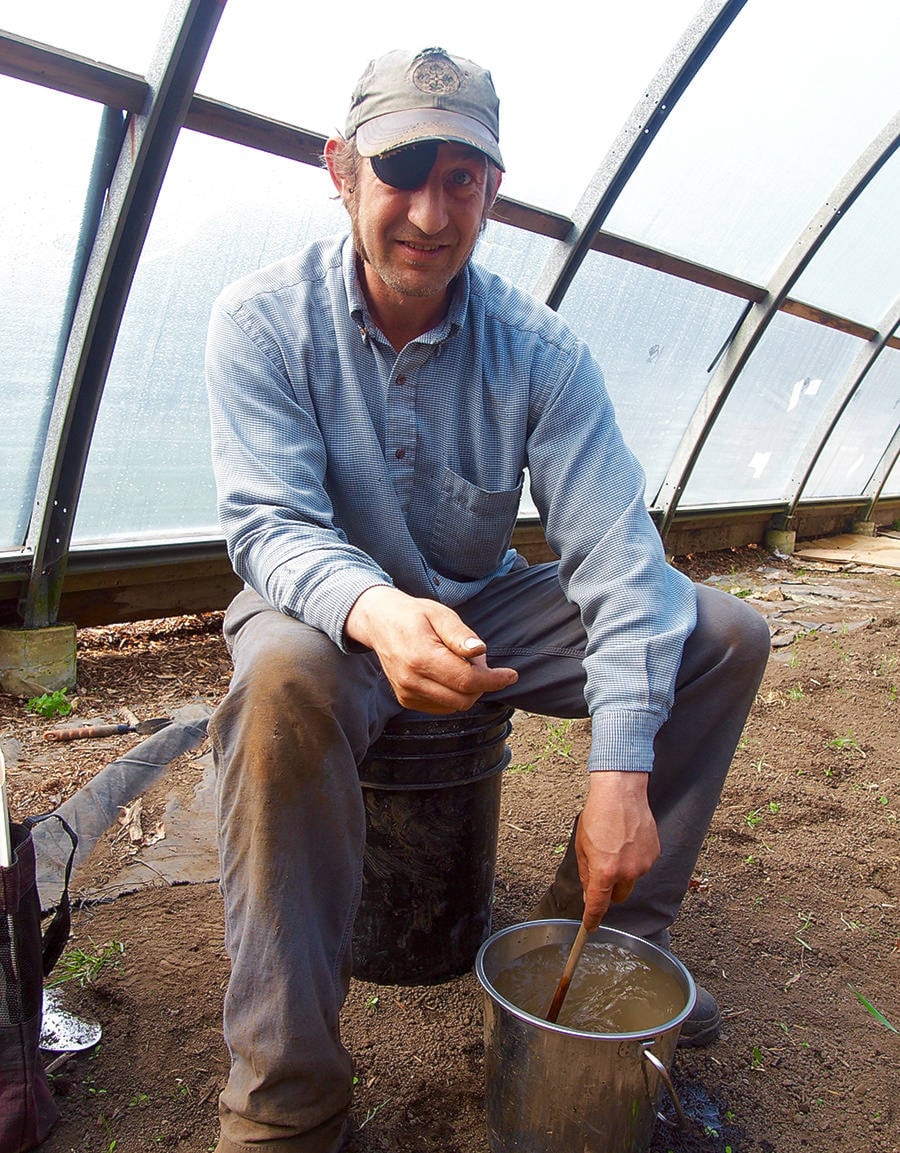BY MIKE YOUDS
No matter what people may think of biodynamic agriculture — and the practice is not without its skeptics — the benefits of barrel composting to body and spirit are beyond dispute.
That much was evident at a demonstration of barrel composting by Gary and Louis Swann of Leda Biodynamic Farm in Port Alberni.
Anna Lewis, horticultural co-ordinator at Healthy Harvest Farm and an agricultural support worker with the Alberni Clayquot Regional District, hosted the workshop-style demo in a greenhouse one stormy morning last week. Since the Swanns adopted biodynamic methods on their Batty Road organic farm several years ago, the barrel composting has become a familiar spring ritual to some in the Alberni Valley.
“Yes, it is a ritual,” Louis remarked as about a dozen people gathered around a pile of cow manure, shovels at the ready to begin a process intended to summon elemental forces of nature and the cosmos.
While multiple ingredients go into barrel composting, they don’t necessarily require a barrel. The name stems from the barrel or keg originally used. No barrels were in sight on this day. Instead, four people with flat shovels rotated around the pile, turning the manure in a rhythmic and energetic dance. Volunteers take turns spelling off.
“When we make compost, we try to get a lot of people involved,” Gary explained. “It’s an invitation to elemental being.”
Garden-variety compost is sometimes described by growers as “black gold.” This, however, is no ordinary compost but rather a key component in the practice of biodynamic methods.
Biodynamic agriculture was developed by Austrian philosopher and social reformist Rudolph Steiner in the 1920s as a response to modernization and proliferation of chemicals in farming. His ideas gained ferment at a time when many people in Europe and North America were receptive to new ideas around spiritualism and the natural order.
“One of the things he played a big part in was looking up at the cosmos, the moon and the sun and the Zodiac,” Louis said. “All these sort of layers, the rhythms of life. He was really into making people more aware of their surroundings … He was laying a spiritual foundation for the renewal of agriculture.”
Biodynamics regards the farm as a living whole, ideally a self-sustaining one. The approach dovetails with efforts to improve food security in order to reduce society’s reliance on industrial-scale agriculture, increasingly viewed as unsustainable.
“We should be able to feed ourselves in this valley,” said Gary, who, along with his wife Jacqueline, has farmed organically in the valley since the early 1970s.
While Steiner’s hypothesis wasn’t tested scientifically, he inspired countless others to adopt biodynamic methods in step with the environmental movement.
Aside from some strong backs, barrel composting requires addition of basalt and eggshell as initial ingredients. After a full hour of mixing, six herbs — yarrow, chamomile, stinging nettle, oak bark, dandelion and valerian — are carefully added. The blend is placed in a pit for four months, covered with burlap and a small wooden pyramid (a half barrel can be substituted).
A little goes a long way. Dissolved in water, the compost is broadcast using a wide brush, flicked in a circular fashion to mimic natural forces.
“What barrel composting does, it gets the biodynamic processes spread around the garden.”
“And it works,” Louis added, citing superior flavour and storage capability of foods through use of barrel compost. Higher yields are another plus factor.
The Swanns retail their barrel compost for $12 a half cup at the Spirit Square Farmers Market held on Saturdays at Harbour Quay.
